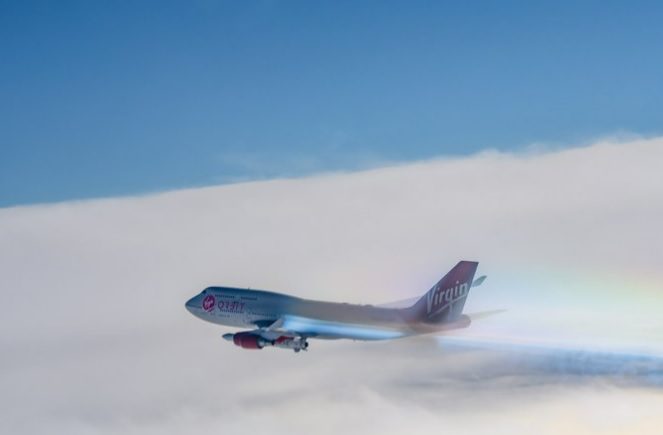The Virgin Orbit launch provider was celebrating its third launch success in a row of its air-launched LauncherOne rocket. The “Stage Zero” Boeing 747 (Cosmic Girl) carrier aircraft, with the LaunchOne rocket slung under the port wing, took off from the Mojave Air and Space Port in California at 2139 GMT on 13 January 2022. The aircraft then headed further out into the Pacific than past launches as the launch was going to a 45 degree inclination orbit rather than a higher inclination orbit. At 2252 GMT, while the Boeing 747 aircraft was at 35,000 feet, a command was sent to release the rocket. After a four second drop, the first stage ignited its first stage engine on its way to space.
Aboard the two-stage launch vehicle were seven small spacecraft which were successfully released into a 500 km low Earth orbit. These included, the GEARRS 3 3U CubeSat for the US Airforce Research Laboratory which will test Globalstar communications, PAN A and PAN B 3U CubeSats for Cornell University which are testing rendezvous and docking technologies; the TechEdSat 13, a 3U CubeSat technology test spacecraft for the NASA Ames Research Center. The STORK-3 satellite is an imaging satellite for SatRevolution’s constellation; SteamSat-2 is a technology test satellite for SteamJet testing outs its steam-based thrusters; and finally a space debris measuring satellite ADLER-1 built by Spire Global for the Austrian Space Forum.
Aboard the flight was the RAF pilot Flight Lieutenant Matthew Stannard who actually sent the release command. He is on secondment to Virgin Orbit from the UK Ministry of Defence which has a special interest in the operation. While this launch took place over the Pacific, the UK Ministry of Defence eventually plans to launch its own satellites using the Boeing 747/LauncherOne system over the Atlantic, after flying out of the Newquay airport/spaceport in Cornwall.







